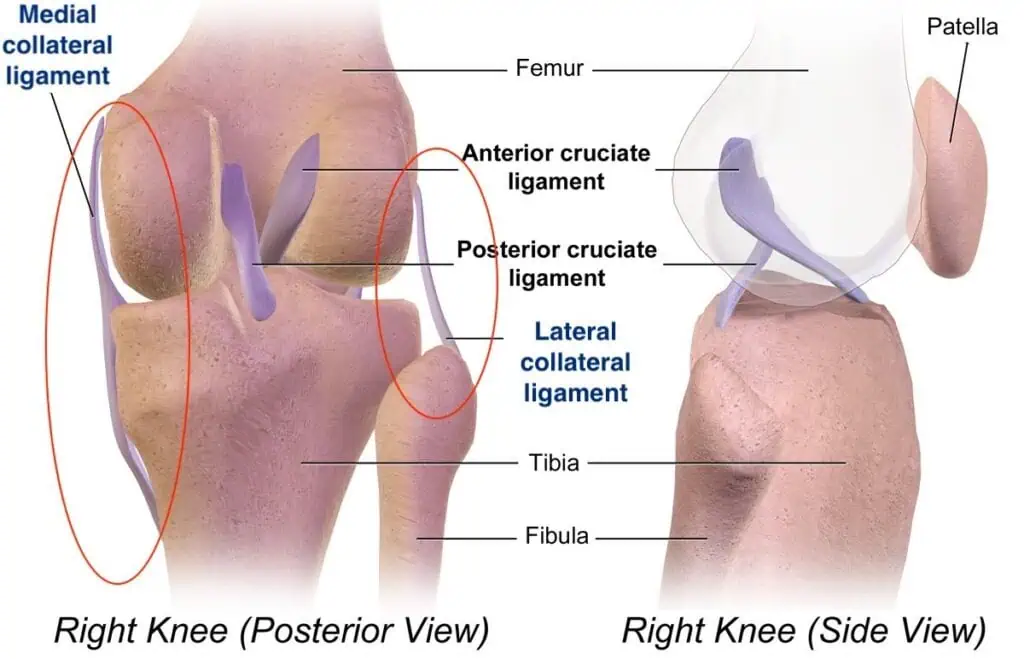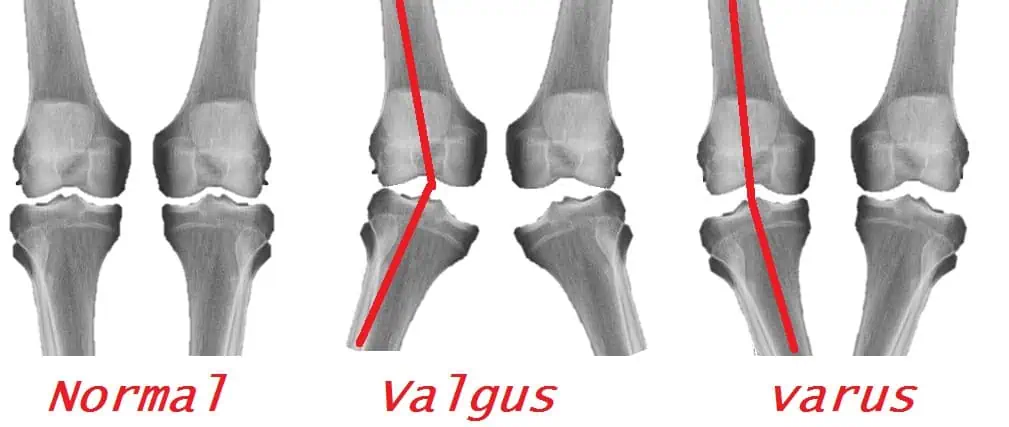What is a collateral ligament injury?
A ligament is a connective tissue which connects two bones together. Collateral ligaments of the knees keep your knees stable by preventing your excessive sideways movement. There is a collateral ligament on the inside (medial) and outside (lateral) of the knee.[1]

How does this injury occur?
A collateral ligament (CL) injury occurs when a ligament is stretched or torn by excessive movement of the knees sideways. This usually occurs with the knee being hit from the side while a person is in the standing position during sport. Sometimes, the collateral ligaments can also be injured in twisting motions of the knee. In this case, other ligaments of the knee may also be injured.
What are some symptoms that I can look out for?
If you think that you may have a CL injury, here are some indicative symptoms that you can look out for:
How is collateral ligament injury assessed?
A. Physical Examination [2]
Your doctor will perform specific assessments used to test for CL injuries, including the:

[3]
Although physical examinations can diagnose most CL injuries, your doctor may order some imaging tests to rule out other possible injuries and determine the severity of your CL injury:
B. X-ray
An x-ray can show images of the bones, which can be used to check for broken bones. Stress views may also be performed, which are X-rays done while a valgus or varus stress test is performed on your knee.
C. Magnetic Resonance Imaging (MRI)
An MRI provides a detailed image of the ligaments, confirming a diagnosis of a CL injury. A MRI scan is also useful to assess the knee for injuries which may have occurred at the same time.y.
D. Ultrasound
An ultrasound makes use of high-frequency sound waves to build an image of the knee tissues, confirming a diagnosis of a CL injury. In some cases in which an MRI is not recommended, an ultrasound is used.
What does this mean to me?
Acute collateral ligament injuries usually heal uneventfully without surgery. In some cases, especially if the injury comes with other ligament injuries, or if there is a fracture at the same time, surgery may be required to heal your injury.
Occasionally, repeated injuries to the collateral ligament can result in chronic collateral instability, which may lead to a feeling of the knee giving way with everyday activities and motions. In this case, surgery to repair the ligament may be required.
In most cases however, isolated collateral ligament injuries do not require surgery, and can be managed with a course of rehabilitation and rest. There is also usually no long term effect from such injuries.
How is collateral ligament injury treated?
For most isolated cases, no surgery is needed. A combination of rest, anti-inflammatory pain medications, and knee braces may be prescribed to support your knee as it heals. A course of monitored physiotherapy is usually also prescribed to assist in recovery of knee motion and strength, and to facilitate return to sporting activities.
For cases which are associated with other injuries such as fractures or other ligament injuries, surgery may be undertaken to repair the collateral ligament, as this aids overall recovery from the injury. For cases where there is chronic instability of the knee, surgery may similarly be advocated.
Platelet enriched plasma or PRP treatment, is a relatively new treatment which utilises healing factors formed in your blood by cell fragments known as platelets. These healing factors are recognised as a potential treatment for ligament and tendon injuries, but not enough is known about its usefulness, and it is considered an experimental treatment. This treatment can potentially shorten recovery time in an isolated collateral ligament injury.
Surgery for the treatment of a collateral ligament can vary depending on the type of injury. In general, acute injuries are repaired, by sewing the torn ligament together. Chronic injuries are reconstructed by replacing the ligament with a tendon or artificial ligament, which acts as the new ligament moving forward.
Rehabilitation and Recovery
In general, most isolated acute collateral ligament injuries heal within 3 months. You may be asked to use crutches for up to 2 weeks, and wear a brace for up to 4-6 weeks to aid recovery. Most patients will be able to return to sport by 6 to 8 weeks. You may also require 3-6 sessions of physiotherapy as part of your rehabilitation.
If you are looking for orthopaedic treatments in Singapore, feel free to book an appointment at The Orthopaedic and Pain Practice today! Dr Yong Ren will be happy to give you a consultation.
Contact us at:
References:
[3] https://orthopaedia.com/page/Collateral-ligament-injuries-of-the-knee
Keywords: knee, pain, tear, ligament, bone